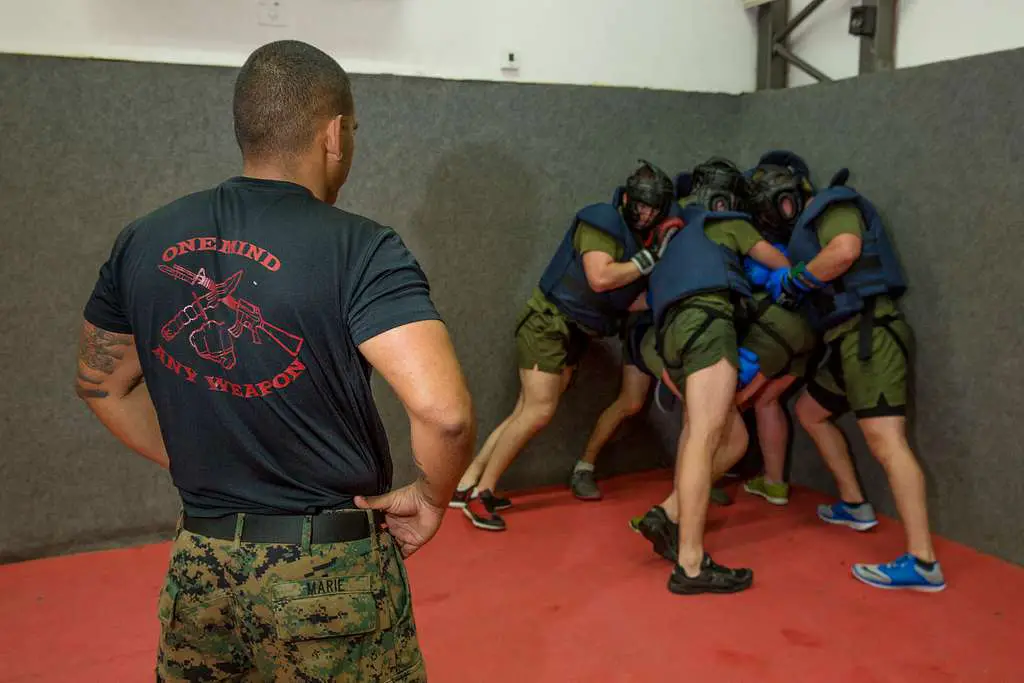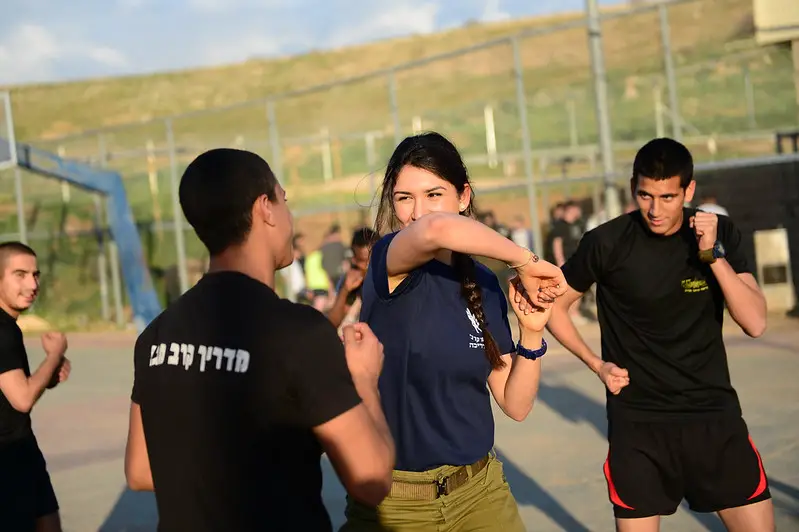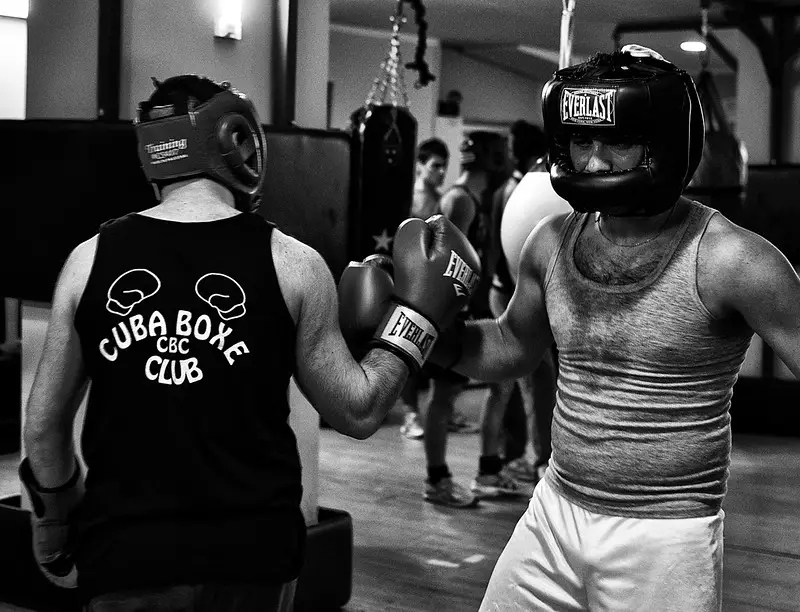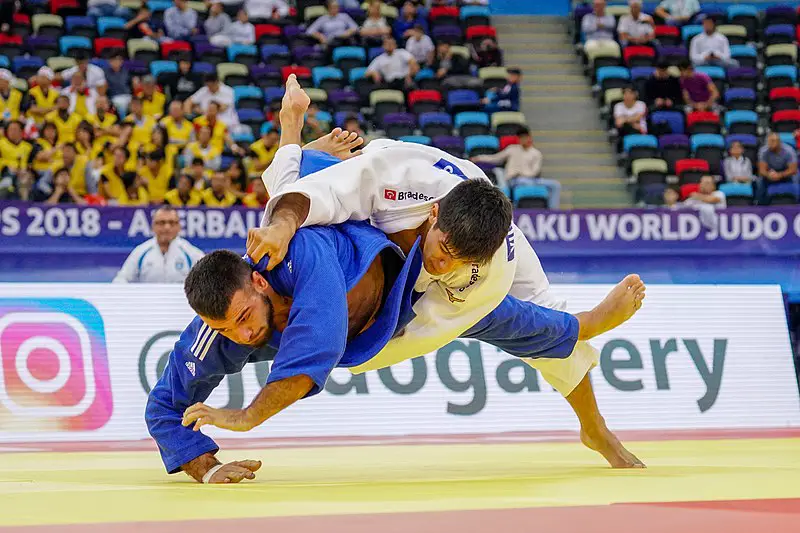Krav Maga is a famous martial art developed by the Israeli military in the 1950s. Though practiced worldwide, many people wonder is krav maga effective for self-defense.
In this article, you will discover a comprehensive analysis of how effective is krav maga, and how can you use it in real-world scenarios.
Is Krav Maga Effective For Self-Defense?
Yes, Krav Maga is an effective self-defense system and trained practitioners can rely on Krav Maga skills and techniques to protect themselves in a real combat scenario. The system is a hybrid mix of striking, grappling, weapon-based and self-defense tactics designed to cover most scenarios individuals face in real life.
The focus is on real-world situations with an emphasis on instinctive movements and techniques that can be quickly learned and applied. Thus, its effectiveness lies in its emphasis on simplicity. Students use natural body movements rather than complex moves that require years of practice to master.
On top of that, the entire system revolves around self-defense and realism. There is no competition of any kind, or rules to follow. The only rule is survival. As such, the system also includes scenarios involving multiple attackers, armed assailants, and other dangerous situations one might encounter in real life.

The learning syllabus is also adaptable to individual needs. Anyone, regardless of fitness level, age, gender or physical size can learn self-defence and develop their own style.
5 Reasons Why Krav Maga Is Effective For Self-Defense
Krav Maga is effective because it equips practitioners with versatile combat techniques using realistic teaching methods that resemble situations they may face in real life. Following is a detailed explanation of each one.
System designed for survival
Krav Maga does not have any type of competition. There are no rules to follow. The system prioritizes survival above all else. It teaches you to use whatever tools or resources available to protect yourself.
If this means picking a branch or glass bottle and blasting the attacker — that’s what you should do. Other martial arts focus too much on competition which limits your skills in real combat. It teaches your mind and instincts to obey the rules and rely on a referee or safe environment.
However, Krav Maga is the opposite of that. It prepares an individual for the chaotic, violent and dangerous nature of real-life fighting. Whether facing armed assailants, multiple attackers, or unexpected challenges, Krav Maga provides individuals with the skills and mindset needed to defend themselves and their loved ones in any situation.
A hybrid mix of grappling and striking
Krav Maga teaches a variety of strikes, including punches, elbows, knees, and kicks. Students learn how to land these strikes on vulnerable areas such as the face, throat, solar plexus and groin. These strikes are delivered with maximum force and aggression to hurt the attacker quickly.
These techniques are adopted from boxing, Muay Thai, karate and other effective striking arts.
Next, the system places a strong emphasis on clinch and grappling. It includes different offensive and defensive grappling moves such as takedowns, trips and throws from judo and wrestling.
There are also techniques for escaping from various types of grabs, chokes, and holds, including wrist grabs, bear hugs and chokeholds. These techniques focus on creating openings to break free.
Weapon Defense (Military Approved)
Unlike many other combat systems, Krav Maga teaches proper weapon defense. This includes defensive tactics both against armed and unarmed attackers. Students practice defence against knives, bats, and guns, as well as common objects such as glass bottles or ashtrays.
Practitioners learn how to disarm attackers, control the weapon, and neutralize the threat using techniques that prioritize speed, efficiency, and safety. The same techniques and methods are used by the military so the effectiveness is under no question.
Of course, instructors pay extra attention in teaching when and how to use these techniques. Practitioners are trained to assess the situation rapidly, identifying the type of weapon and the attacker’s intent, before executing appropriate defences.
Techniques include disarming manoeuvres that capitalize on leverage, distraction, and aggression to seize control of the weapon while simultaneously striking or incapacitating the attacker
Self-Defense Against Multiple Attackers
Krav Maga training often includes drills and scenarios involving multiple attackers. In this segment, practitioners learn how to deal with multiple opponents in different environments such as open or closed spaces. This includes movement, prioritizing targets, specific striking moves, defence and many other methods.
To add to the realism, practitioners also do practical drills. A group of students would attack one individual, back them against the wall, throw to the ground, or strike from different directions. Though this sounds scary, it is the best method of teaching a person how to deal with such situations both emotionally and physically.
One common drill is the “Circle of Attackers,” where practitioners stand in the center of a circle surrounded by multiple attackers. The defender must maintain situational awareness, constantly scanning their surroundings to identify potential threats and respond accordingly.
Another drill is the “Multiple Attacker Relay,”. This is where attackers take turns engaging the defender in rapid succession, mimicking a scenario where attackers may come at the defender one after the other.
Realistic and intense teaching methods
Krav Maga instructors utilize realistic teaching methods to ensure that practitioners are prepared to defend in real-life situations. These methods focus on creating a training environment that closely simulates the intensity and stress of a real fight.
Scenario-based training replicates common self-defense situations. This includes attacks from behind, multiple attackers, weapons, objects, and other common attacks. These drills help practitioners develop skills and confidence to deal with these scenarios in an effective way.
Next, Krav Maga instructors use stress drills to simulate the physiological and psychological effects of a high-pressure situation. These drills may involve loud noises, flashing lights, physical exhaustion, or verbal aggression from the instructor or training partners.
Dynamic sparring is also a key part of preparing a person to use techniques in real combat.
Krav Maga Self-Defense Limitations
While Krav Maga is highly effective for self-defense in many situations, it also has some limitations:
Limited Ground Fighting Emphasis
While Krav Maga does include techniques for defending against ground attacks, it doesn’t emphasize ground fighting to the same extent as disciplines like Brazilian Jiu-Jitsu. This could be a limitation in situations where the fight ends up on the ground for an extended period.
Complexity in Weapon Defense
While Krav Maga does teach weapon defense techniques, effectively defending against armed attackers requires a high level of proficiency and training. Dealing with armed assailants safely and effectively can be challenging and may require ongoing practice and refinement.
Quality of Instruction
As with any martial art or self-defense system, the quality of instruction can vary significantly between different Krav Maga schools and instructors. Some schools may prioritize realistic training and effective techniques, while others may focus more on fitness or commercialization.
Risk of Injury in Training
Krav Maga training can be physically demanding and may carry a higher risk of injury compared to less intense martial arts or self-defense systems. Techniques such as full-force strikes and stress drills can lead to accidental injuries if not conducted with proper supervision and control.
Is Krav Maga Good For Women?
Yes, Krav Maga offers several benefits for women. Techniques are designed to be practical and easy to learn, regardless of a person’s size or strength. Women can quickly acquire skills to defend themselves against common attacks, such as grabs, chokes, and strikes, in real-world situations.

As an adaptable hybrid system, women can quickly learn how to maximize their strengths in a fight. Since they often get attacked by physically larger people (men), they learn valuable self-defence tactics. This includes attacking pressure points, grappling defence, how to generate power, do damage with every shot, etc.
Whether the attacker grabs them by the arm, muscle against the wall or down to the ground, they will have skills to respond effectively.
Apart from that, they learn awareness, how to stay calm, scan the surroundings for potential weapons, and exit points, and most importantly, how to develop a plan in a few seconds.
Krav Maga or MMA For Self-Defense?
Choosing between MMA (Mixed Martial Arts) and Krav Maga for self-defense depends on various factors, including individual preferences, goals, and circumstances. Here are some considerations for each:
MMA for Self-Defense
- Versatility – system incorporates techniques from various martial arts disciplines, including striking (e.g., boxing, Muay Thai), grappling (e.g., Brazilian Jiu-Jitsu, wrestling), and submissions (e.g., Judo, Sambo). This versatility allows practitioners to develop a well-rounded skill set for different combat scenarios.
- Sportive Experience – training often involves sparring and competition, providing practitioners with valuable experience in applying techniques against resisting opponents. This experience can help build confidence and improve performance under pressure.
- Physical Fitness – training offers a rigorous workout that enhances cardiovascular fitness, strength, agility, and flexibility. Regular training can lead to improvements in overall physical conditioning.
- Technical Depth. MMA practitioners delve deeply into the technical aspects of striking, grappling, and submissions, honing their skills through detailed instruction and focused practice.
Krav Maga for Self-Defense
- Simplicity and Efficiency – Techniques are designed to be simple, practical, and easy to learn, focusing on instinctive movements and natural reactions. This makes it accessible to individuals without prior martial arts experience and enables rapid skill acquisition.
- Real-World Application – The emphasis is on self-defense in real-life scenarios, teaching practitioners to respond effectively to common threats such as grabs, chokes, and armed attacks. Techniques prioritize neutralizing the threat quickly and escaping safely.
- Stress Training – Krav Maga incorporates stress drills and scenario-based training to simulate the intensity of real-world confrontations. This helps practitioners develop the mental toughness and situational awareness needed to perform under pressure.
- Weapon Defense – This includes defenses against armed attackers, teaching practitioners how to disarm and neutralize threats posed by weapons such as knives, guns, and blunt objects.
- Focus on Self-Protection – Unlike MMA, which may involve competitive sparring, training is primarily focused on self-protection and personal safety. Techniques are geared towards surviving potentially life-threatening situations rather than winning matches.
Conclusion — Can You Use Krav Maga For Self-Defense?
Yes, Krav Maga is among the most effective self-defence systems one can train in. Whether facing unarmed assailants, armed attackers, or multiple opponents, Krav Maga empowers individuals to defend themselves effectively and escape dangerous situations.
Krav Maga is effective due to its emphasis on practical techniques that are easy to learn and apply in real-life situations. It prioritizes instinctive movements, aggressive counterattacks, and targeting vulnerable areas, enabling individuals to neutralize threats quickly and escape safely.
Also, Krav Maga’s focus on scenario-based training, stress drills, and continuous evolution ensures that practitioners are well-prepared to defend themselves against a wide range of threats and challenges.

